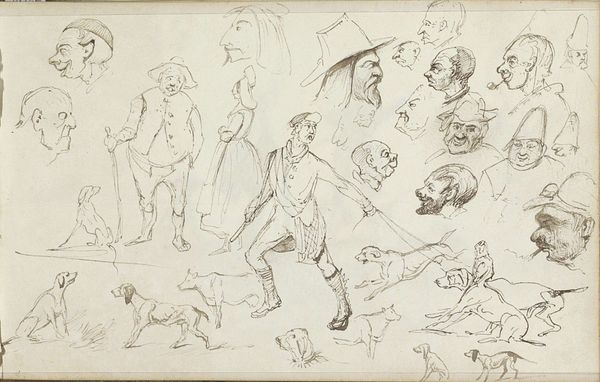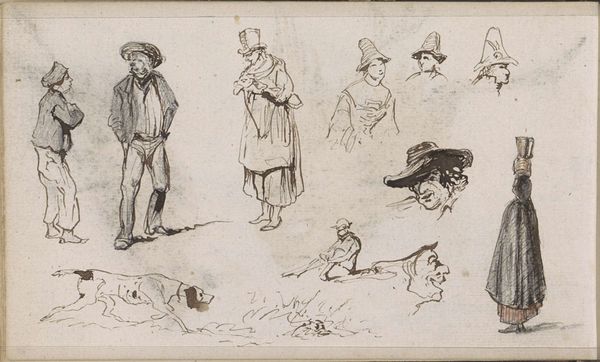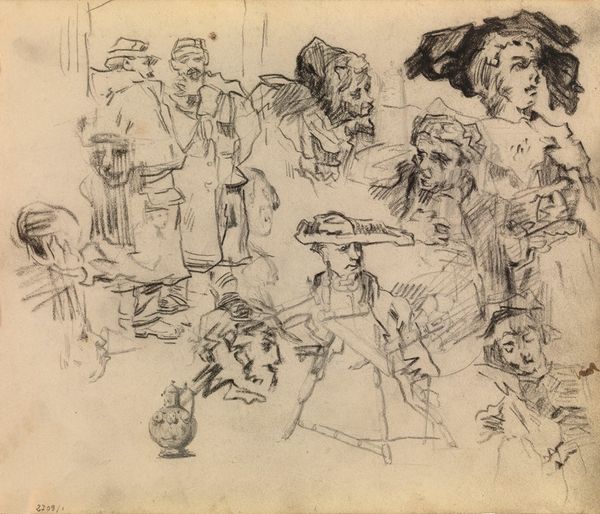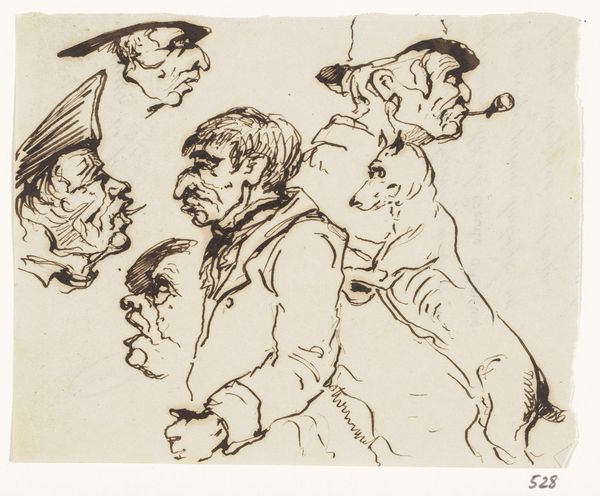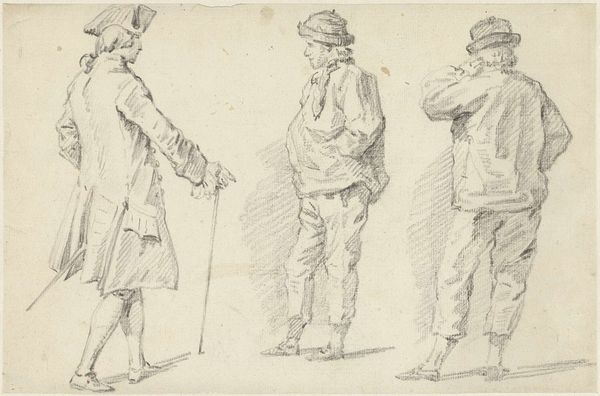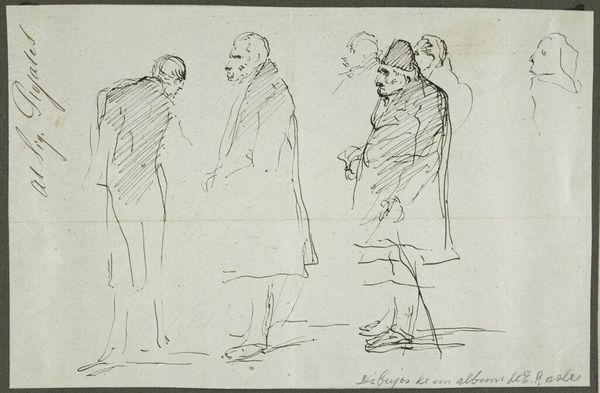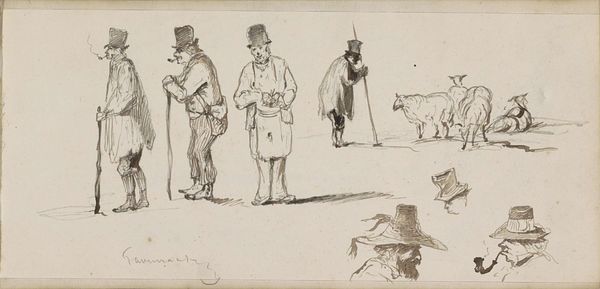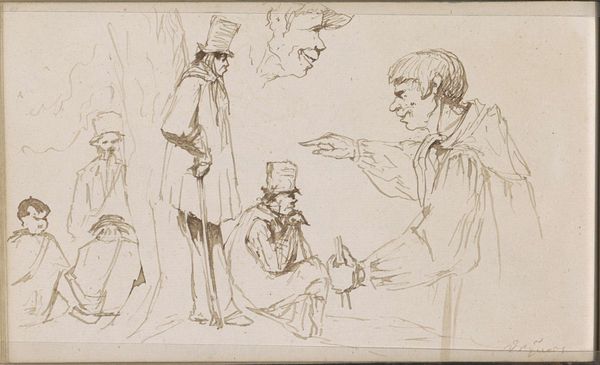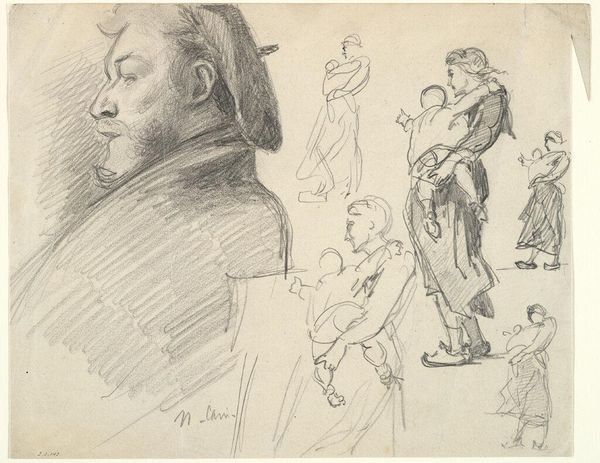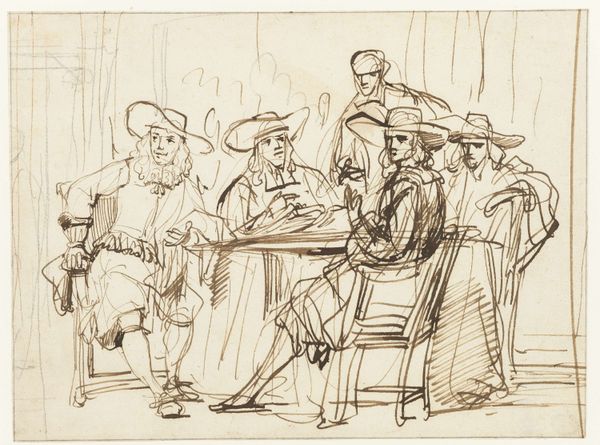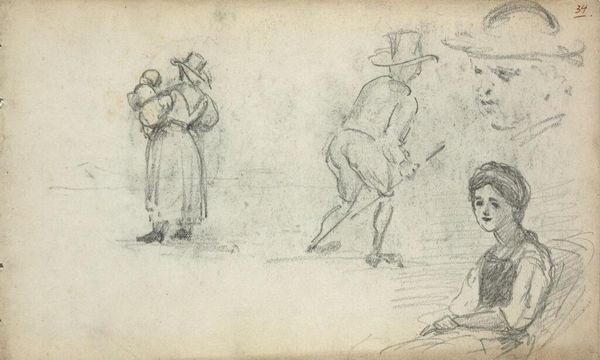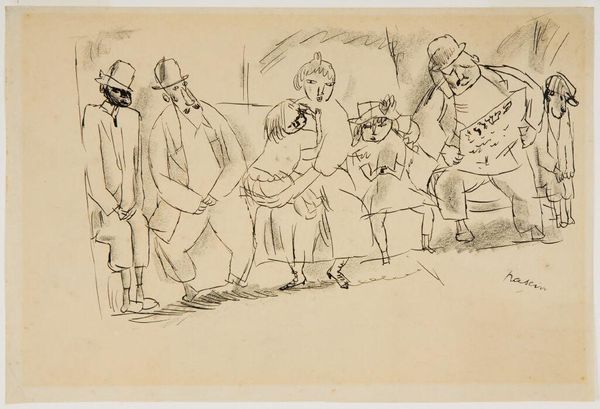
Mannen, waaronder een pijprokende man leunend op een boomstronk 1840
0:00
0:00
drawing, pencil
#
portrait
#
drawing
#
amateur sketch
#
toned paper
#
light pencil work
#
pencil sketch
#
incomplete sketchy
#
figuration
#
personal sketchbook
#
romanticism
#
pen-ink sketch
#
pencil
#
sketchbook drawing
#
genre-painting
#
sketchbook art
#
initial sketch
Copyright: Rijks Museum: Open Domain
Editor: Here we have "Men, including a pipe-smoking man leaning on a tree trunk", a pencil drawing from 1840 by Johannes Tavenraat. It's currently held at the Rijksmuseum. The sheet is filled with sketchy figures, almost like a study. I'm struck by the variety of hats! What catches your eye about this piece? Curator: The immediate impression is the dynamic interplay of line and form. Note how Tavenraat employs a staccato rhythm of strokes, varying the pressure to create depth and volume despite the evident lack of color. Editor: So, it's about the application of the pencil? Curator: Precisely. Consider the density of line in the rendering of the figures' clothing, as compared to the relative sparseness in the background. It pushes them forward in the pictorial space, while simultaneously flattening the whole composition. Do you observe any dominant shapes that might be significant? Editor: I see a lot of cylinders, especially with the hats and the tree trunk. Curator: An astute observation. These repeated cylindrical forms create a visual echo. How do these shapes interact with the more organic lines of the figures themselves? Is there a sense of tension, harmony, or perhaps something else entirely in their relationship? Editor: I think it's a little bit of both. The rigid cylinders contrast with the looser figures, but they also seem to ground them, like the figures are reliant on them. I wouldn’t have noticed so much depth and complexity had you not explained it. Curator: And hopefully, this exercise of close observation reinforces the crucial connection between an artwork’s apparent subject and its underlying visual language.
Comments
No comments
Be the first to comment and join the conversation on the ultimate creative platform.
